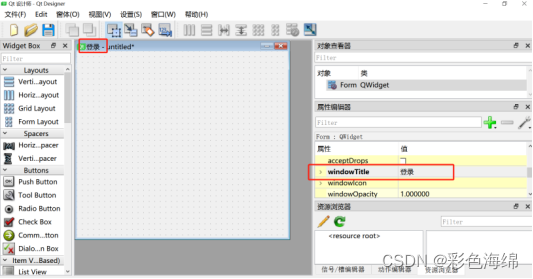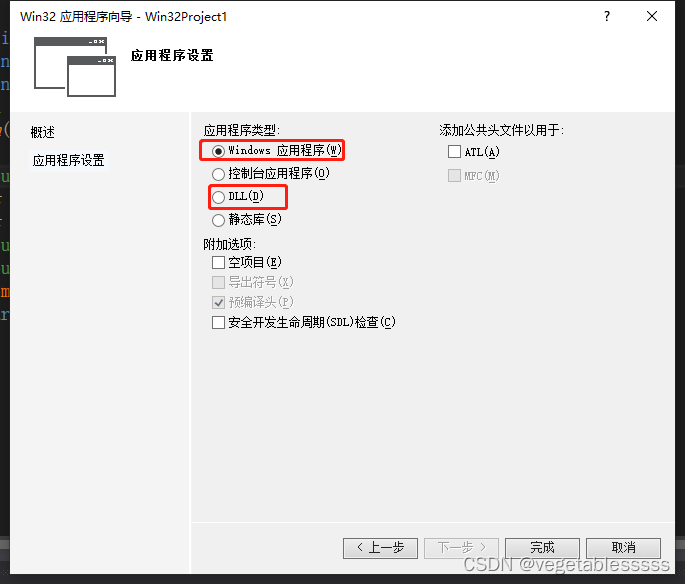当前位置:网站首页>复合类型(自定义类型)
复合类型(自定义类型)
2022-07-03 14:43:00 【敏儿好xun】
结构体
概述
- 数组:描述一组具有相同类型数据的有序集合,用于处理大量相同类型的数据运算。
- 有时我们需要将不同类型的数据组合成一个有机的整体,如:一个学生有学号/姓名/性别/年龄/地址等属性。显然单独定义以上变量比较繁琐,数据不便于管理。
- C语言中给出了另一种构造数据类型——结构体。

结构体变量的定义和初始化
定义结构体变量的方式:
- 先声明结构体类型再定义变量名
- 在声明类型的同时定义变量
- 直接定义结构体类型变量(无类型名)
示例:
方法一:
#include<stdio.h>
//struct 结构体名
//{
// //结构体成员列表
// 姓名
// 年龄
//};
struct student
{
char name[21];
int age;
int score;
char addr[51];
};
int main()
{
//创建及结构体变量
//方法1:比较慢
//struct student stu;//结构体类型 结构体变量
//strcpy(stu.name,"张三");//结构体对字符串数组进行赋值时,采用拷贝赋值。//数组名为常量,所以对其赋值的时候不能使用=,得使用strcpy
//stu.age = 18;
//stu.score = 100;
//strcpy(stu.addr, "山西省太原市");
//方法2
struct student stu = {
"张三",18,100,"山西省太原市" };
printf("姓名:%s\n", stu.name);
printf("年龄:%d\n", stu.age);
printf("成绩:%d\n", stu.score);
printf("地址:%s\n", stu.addr);
return 0;
}
方法二:
#include<stdio.h>
struct student
{
char name[21];
int age;
int score;
char addr[51];
}stu= {
"张三",18,100,"山西省太原市" };
int main0202()
{
printf("姓名:%s\n", stu.name);
printf("年龄:%d\n", stu.age);
printf("成绩:%d\n", stu.score);
printf("地址:%s\n", stu.addr);
return 0;
}
int main(void)
{
struct student stu;
//键盘获取值
scanf("%s%d%d%s", stu.name, &stu.age, &stu.score, stu.addr);//数组名为首地址,所以不用加&
printf("姓名:%s\n", stu.name);
printf("年龄:%d\n", stu.age);
printf("成绩:%d\n", stu.score);
printf("地址:%s\n", stu.addr);
return 0;
}
结果:
姓名:张三
年龄:18
成绩:100
地址:山西省太原市
结构体数组
示例:
头文件.h——struct.h
#pragma once
struct student
{
char name[21];
int age;
char sex;
int score[3];
char addr[51];
};
主函数调用头文件
#include<stdio.h>
#include "struct.h"//头文件调用
int main(void)
{
struct student stu[3]=
{
{
"马笑笑",19,'M',90,100,98,"河南郑州"},
{
"丁心",18,'F',97,96,99,"重庆"},
{
"刘光头",15,'M',97,96,98,"重庆"}
};
printf("结构体大小:%d\n", sizeof(stu));
printf("结构体元素大小:%d\n", sizeof(stu[0]));结构体成员需要偏移对齐
printf("结构体元素个数:%d\n", sizeof(stu) / sizeof(stu[0]));
for (int i = 0; i < 3; i++)
{
printf("姓名:%s\n", stu[i].name);
printf("年龄:%d\n", stu[i].age);
printf("性别:%s\n", stu[i].sex == 'M' ? "男" : "女");
printf("成绩1:%d\n", stu[i].score[0]);
printf("成绩2:%d\n", stu[i].score[1]);
printf("成绩3:%d\n", stu[i].score[2]);
printf("地址:%s\n", stu[i].addr);
printf("\n");
}
return 0;
}
结果:
结构体大小:288
结构体元素大小:96
结构体元素个数:3
姓名:马笑笑
年龄:19
性别:男
成绩1:90
成绩2:100
成绩3:98
地址:河南郑州
姓名:丁心
年龄:18
性别:女
成绩1:97
成绩2:96
成绩3:99
地址:重庆
姓名:刘光头
年龄:15
性别:男
成绩1:97
成绩2:96
成绩3:98
地址:重庆
结构体排序
#include<stdio.h>
#include "struct.h"//头文件调用
//结构体排序
int main(void)
{
struct student stu[3] =
{
{
"马笑笑",19,'M',90,100,98,"河南郑州"},
{
"丁心",18,'F',97,96,99,"重庆"},
{
"刘光头",15,'M',97,96,98,"重庆"}
};
for (int i = 0; i < 3 - 1; i++)
{
for (int j = 0; j < 3 - i - 1; j++)
{
if (stu[j].age > stu[j + 1].age)
{
struct student temp=stu[j];
stu[j] = stu[j + 1];
stu[j + 1] = temp;
}
}
}
for (int i = 0; i < 3; i++)
{
printf("姓名:%s\n", stu[i].name);
printf("年龄:%d\n", stu[i].age);
printf("性别:%s\n", stu[i].sex == 'M' ? "男" : "女");
printf("成绩1:%d\n", stu[i].score[0]);
printf("成绩2:%d\n", stu[i].score[1]);
printf("成绩3:%d\n", stu[i].score[2]);
printf("地址:%s\n", stu[i].addr);
printf("\n");
}
return 0;
}
结果:
姓名:刘光头
年龄:15
性别:男
成绩1:97
成绩2:96
成绩3:98
地址:重庆
姓名:丁心
年龄:18
性别:女
成绩1:97
成绩2:96
成绩3:99
地址:重庆
姓名:马笑笑
年龄:19
性别:男
成绩1:90
成绩2:100
成绩3:98
地址:河南郑州
开辟堆空间存储结构体
示例:
#define _CRT_SECURE_NO_WARNINGS
#include<stdio.h>
#include "struct.h"
typedef struct student ss;//起个别名
int main(void)
{
//printf("%d", sizeof(struct student));//结构体元素大小
ss* p = (ss*)malloc(sizeof(ss) * 3);//开辟堆空间
for (int i = 0; i < 3; i++)
{
scanf("%s%d,%c%d%d%d%s",p[i].name,&p[i].age,&p[i].sex,
&p[i].score[0],&p[i].score[1],&p[i].score[2],p[i].addr);//因为有字符"%d%c",所以加逗号区分前面的int类型和字符类型
}
for (int i = 0; i < 3; i++)
{
printf("姓名:%s\n", p[i].name);
printf("年龄:%d\n", p[i].age);
printf("性别:%s\n", p[i].sex == 'M' ? "男" : "女");
printf("成绩1:%d\n", p[i].score[0]);
printf("成绩2:%d\n", p[i].score[1]);
printf("成绩3:%d\n", p[i].score[2]);
printf("地址:%s\n", p[i].addr);
printf("\n");
}
free(p);
return 0;
}
结果:
哈哈 18,M 89 98 99 山西
嘻嘻 19,M 99 80 98 陕西
嘿嘿 17,M 78 85 86 山东
姓名:哈哈
年龄:18
性别:男
成绩1:89
成绩2:98
成绩3:99
地址:山西
姓名:嘻嘻
年龄:19
性别:男
成绩1:99
成绩2:80
成绩3:98
地址:陕西
姓名:嘿嘿
年龄:17
性别:男
成绩1:78
成绩2:85
成绩3:86
地址:山东
结构体嵌套结构体
示例:
建立头文件.h文件
struct1.h
#pragma once
struct scores
{
int cl;//c语言
int cpp;//c++
int cs;//c#
};
struct student
{
char name[21];
int age;
struct scores ss;
char addr[51];
};
主程序调用
#include <stdio.h>
#include "struct1.h"
int main(void)
{
struct student stu = {
"哈喽",20,98,99,100,"陕西宝鸡" };
printf("%s\n%d\n%d\n%d\n%d\n%s", stu.name, stu.age, stu.ss.cl, stu.ss.cpp, stu.ss.cs, stu.addr);
return 0;
}
结果:
哈喽
20
98
99
100
陕西宝鸡
结构体赋值
示例:
#include<stdio.h>
#include"struct.h"
int main()
{
struct student stu = {
"呼呼",19,89,98,100,"太原" };
struct student s1 = stu;
//数组名为常量,所以对其赋值的时候不能使用=,得使用strcpy
strcpy(s1.name, "呵呵");//对s1的修改不影响stu 虽然复制 但两者为独立的空间
printf("%s", stu.name);
return 0;
}
结果:
呼呼
结构体和指针
结构体成员为指针类型
示例:
#include<stdio.h>
struct student//结构体成员为指针类型
{
char* name;
int age;
int* scores;
char* addr;
};
int main()
{
struct student stu;
//开辟堆空间
stu.name = (char*)malloc(sizeof(char) * 21);//为指针时,需要开辟堆空间再进行赋值,否则值为常量将不能被改变
stu.scores = (int*)malloc(sizeof(int) * 3);
stu.addr = (char*)malloc(sizeof(char) * 51);
//结构体赋值
strcpy(stu.name, "李四");
stu.age = 18;
stu.scores[0] = 89;
stu.scores[1] = 89;
stu.scores[2] = 89;
strcpy(stu.addr, "重庆");
//打印
printf("%s\n", stu.name);
printf("%d\n", stu.age);
printf("%d\n", stu.scores[0]);
printf("%d\n", stu.scores[1]);
printf("%d\n", stu.scores[2]);
printf("%s\n", stu.addr);
//释放堆空间
free(stu.name);
free(stu.scores);
free(stu.addr);
return 0;
}
结果:
李四
18
89
89
89
重庆
结构体指针
#include<stdio.h>
int main()
{
struct student1 ss = {
"王五",17,84,85,86,"四川" };
struct student1* p = &ss;
/*printf("%s\n", (*p).name); printf("%d\n", (*p).age); printf("%d\n", (*p).scores[0]);*/ //==
//结构体指针->成员
//结构体变量.成员
printf("%s\n", p->name);
printf("%D\n", p->scores[0]);
return 0;
}
结果:
王五
84
结构体整合(类似于开辟二级指针开辟的堆空间)
#define _CRT_SECURE_NO_WARNINGS
#include<stdio.h>
typedef struct student ss;
struct student
{
char* name;
int age;
int* scores;
char* addr;
};
int main()
{
ss* p = (ss*)malloc(sizeof(ss) * 3);
for (int i = 0; i < 3; i++)
{
p[i].name= (char*)malloc(sizeof(char) * 21);
p[i].scores = (int*)malloc(sizeof(int) * 3);
p[i].addr = (char*)malloc(sizeof(char) * 51);
}
for (int i = 0; i < 3; i++)
{
scanf("%s%d%d%d%d%s", p[i].name, &p[i].age, &p[i].scores[0],
&p[i].scores[1], &p[i].scores[2], p[i].addr);
}
for (int i = 0; i < 3; i++)
{
printf("%s %d %d %d %d %s\n", p[i].name, p[i].age, (p+i)->scores[0],
(p+i)->scores[1], p[i].scores[2], p[i].addr);
}
//释放
for (int i = 0; i < 3; i++)
{
free(p[i].name);
free(p[i].scores);
free(p[i].addr);
}
free(p);
return 0;
}
结果:
哈哈 18 98 99 96 北京
呵呵 17 95 96 97 上海
嘻嘻 16 89 86 87 广州
哈哈 18 98 99 96 北京
呵呵 17 95 96 97 上海
嘻嘻 16 89 86 87 广州

结构体和函数
示例:
# include<stdio.h>
#include "struct.h"
typedef struct studennt ss;
void fun01(struct student stu1)
{
strcpy(stu1.name, "嘿嘿");//改变形参
printf("%s\n", stu1.name);
}
//若结构体成员为指针,则需要再主函数中开辟堆空间,若其他函数中的形参没开辟堆空间
//则,对形参的改变将影响实参。
int main0901()
{
struct student stu = {
"哈哈",18,89,79,99,"天津" };
fun01(stu);
printf("%s", stu.name);//形参不会改变实参
return 0;
}
void fun02(struct student* p)
{
strcpy(p->name, "你好");//地址传递,可以改变实参
printf("%s\n", p->name);
}
int main0902()
//结构体指针作为函数参数
{
struct student stu = {
"嘻嘻",19,98,79,97,"南京" };
fun02(&stu);
printf("%s", stu.name);
return 0;
}
//数组作为函数参数退化为指针 丢失元素精度,需要传递个数
void BUbbleSort(struct student* stu, int len)
{
for (int i = 0; i < len - 1; i++)
{
for (int j = 0; j < len - i - 1; j++)
{
if (stu[j].age > stu[j + 1].age)
{
struct student temp = stu[j];
stu[j] = stu[j + 1];
stu[j + 1] = temp;
}
}
printf("\n");
}
}
int main()
{
//结构体数组作为函数参数
struct student stu[3] =
{
{
"张三",20,89,89,89,"宝鸡"},
{
"李四",18,87,87,87,"汉中"},
{
"王五",21,85,85,85,"渭南"}
};
BUbbleSort(stu, 3);
for (int i = 0; i < 3; i++)
{
printf("姓名:%s\n", stu[i].name);
printf("年龄:%d\n", stu[i].age);
printf("成绩1:%d\n", stu[i].score[0]);
printf("成绩2:%d\n", stu[i].score[1]);
printf("成绩3:%d\n", stu[i].score[2]);
printf("地址:%s\n", stu[i].addr);
printf("\n");
}
return 0;
}
结果0901:
嘿嘿
哈哈
结果0902:
你好
你好
结果0903:
姓名:李四
年龄:18
成绩1:87
成绩2:87
成绩3:8949408
地址:
姓名:张三
年龄:20
成绩1:89
成绩2:89
成绩3:8949400
地址:
姓名:王五
年龄:21
成绩1:85
成绩2:85
成绩3:8949416
地址:
const修饰结构体指针
示例:
#include<stdio.h>
typedef struct student ss;
struct student
{
char name[21];
int age;
char sex;
int score[3];
char addr[51];
};
int main1001()
{
ss stu1 = {
"陈一",22,99,99,99,"陈仓" };
ss stu2 = {
"郭二",24,98,98,98,"天水" };
//const修饰结构体指针类型,可修改变量 不能修改指针指向内存空间的值
const ss* p = &stu1;
//p = &stu2;//ok
//(*p).age = 28;//err
//p->age = 30;//err
return 0;
}
int main1002()
{
ss stu1 = {
"陈一",22,99,99,99,"陈仓" };
ss stu2 = {
"郭二",24,98,98,98,"天水" };
//const 修饰结构体指针变量
ss* const p = &stu1;
//strcpy(p->name, "孙叁");//ok
//p = &stu2;//err
//(*p).age = 28;//ok
//p->age = 30;//ok
return 0;
}
//const修饰结构体指针类型,const 修饰结构体指针变量
int main1001()
{
ss stu1 = {
"陈一",22,99,99,99,"陈仓" };
ss stu2 = {
"郭二",24,98,98,98,"天水" };
//const 修饰结构体指针变量
const ss* const p = &stu1;
//p = &stu2;//err
//(*p).age = 28;//err
ss** pp = &p;
//(*pp)->age = 45;//ok 指针指向内容用->
//*pp = &stu2;//ok
//(**pp).age = 50;//ok 变量.向内容用.
return 0
}
联合体
- 联合union是一个能在同一个存储空间存储不同类型数据的类型;
- 联合体所占的内存长度等于其最长成员的长度倍数,也有叫做共用体;
- 同一内存段可以用来存放几种不同类型的成员,但每一瞬时只有一种起作用;
- 共用体变量中起作用的成员是最后一次存放的成员,在存入一个新的成员后原有的成员的值会被覆盖;
- 共用体变量的地址和它的各成员的地址都是同一地址。
示例:
#include<stdio.h>
union Var //联合体里面类型的地址都是一样的
{
int a;
float b;
double c;
char d;
short f;
};
int main()
{
union Var var;
var.a = 10;
var.b = 3.14;
printf("%d\n",var.a);
printf("%f\n", var.b);//每一瞬时只有一种起作用,起作用的成员是最后一次存放的成员
printf("%d\n", sizeof(var));//大小是按内存最大的类型来计算的
return 0;
}
结果:
1078523331
3.140000
8
枚举
- 枚举:将变量的值一一列举出来,变量的值只限于列举出来的值的范围内。
- 枚举用于流程控制比较多
- 枚举类型定义:

示例:
#define _CRT_SECURE_NO_WARNINGS
#include<stdio.h>
//枚举用于流程控制比较多
enum TYPE
{
run,attack,skill,dance=10,showUI,frozen=20,dizz,dath,moti
}type;
//enum 交易
//{
// 插卡,读卡,锁卡,输入密码,查询,取款,退卡,取卡
//};
int main()
{
int value;
while (1)//死循环
{
scanf("%d", &value);
switch (value)//switch括号中写type是展现出case类型,写value是对各个类型进行输出
{
case run:
printf("英雄正在移动中.....\n");
break;
case attack:
printf("英雄正在攻击中.....\n");
break;
case skill:
printf("英雄正在释放技能中.....\n");
break;
case dance:
printf("英雄正在跳舞中.....\n");
break;
case showUI:
printf("英雄正在显示徽章.....\n");
break;
case frozen:
printf("英雄被冰冻中.....\n");
break;
case dizz:
printf("英雄被眩晕中.....\n");
break;
case dath:
printf("英雄死亡.....\n");
return 0;//外层为死循环,break跳不出来,可以加goto
break;
case moti:
printf("英雄等待释放命令.....\n");
break;
default:
break;
}
}
return 0;
}
结果:
0
英雄正在移动中.....
1
英雄正在攻击中.....
10
英雄正在跳舞中.....
typedef关键字
- 作用:起别名 定义函数指针
- typedef为C语言的关键字,作用是为一种数据类型(基本类型或自定义数据类型)定义一个新名字,不能创建新类型。
- 与#define不同,typedef仅限于数据类型,而不是能是表达式或具体的值。
- #define发生在预处理,typedef发生在编译阶段。
边栏推荐
- Adobe Premiere Pro 15.4 has been released. It natively supports Apple M1 and adds the function of speech to text
- Use of form text box (I) select text
- Adc128s022 ADC Verilog design and Implementation
- NPM install is stuck with various strange errors of node NPY
- Niuke: crossing the river
- tonybot 人形機器人 紅外遙控玩法 0630
- Amazon, express, lazada, shopee, eBay, wish, Wal Mart, Alibaba international, meikeduo and other cross-border e-commerce platforms evaluate how Ziyang account can seize traffic by using products in th
- Time conversion ()
- Zzuli:1054 monkeys eat peaches
- Etcd cluster permission management and account password usage
猜你喜欢

Pyqt interface production (login + jump page)

Sword finger offer 28 Symmetric binary tree

天谋科技 Timecho 完成近亿元人民币天使轮融资,打造工业物联网原生时序数据库

NPM install is stuck with various strange errors of node NPY

tonybot 人形機器人 紅外遙控玩法 0630

retrofit

Dllexport and dllimport

tonybot 人形机器人 首次开机 0630

C language DUP function

Programming language: the essence of type system
随机推荐
Zzuli: sum of 1051 square roots
FPGA blocking assignment and non blocking assignment
ShowMeBug入驻腾讯会议,开启专业级技术面试时代
ConstraintLayout 的使用
Detailed explanation of four modes of distributed transaction (Seata)
创业团队如何落地敏捷测试,提升质量效能?丨声网开发者创业讲堂 Vol.03
Use of form text box (I) select text
关于敏捷的一些概念
提高效率 Or 增加成本,开发人员应如何理解结对编程?
Understand the application scenario and implementation mechanism of differential segment
Programming language: the essence of type system
J-luggage lock of ICPC Shenyang station in 2021 regional games (simple code)
天谋科技 Timecho 完成近亿元人民币天使轮融资,打造工业物联网原生时序数据库
Common shortcut keys in PCB
US stock listing of polar: how can the delivery of 55000 units support the valuation of more than 20billion US dollars
NOI OPENJUDGE 1.3(06)
Use of constraintlayout
Tonybot humanoid robot infrared remote control play 0630
Get permissions dynamically
Thread. Sleep and timeunit SECONDS. The difference between sleep